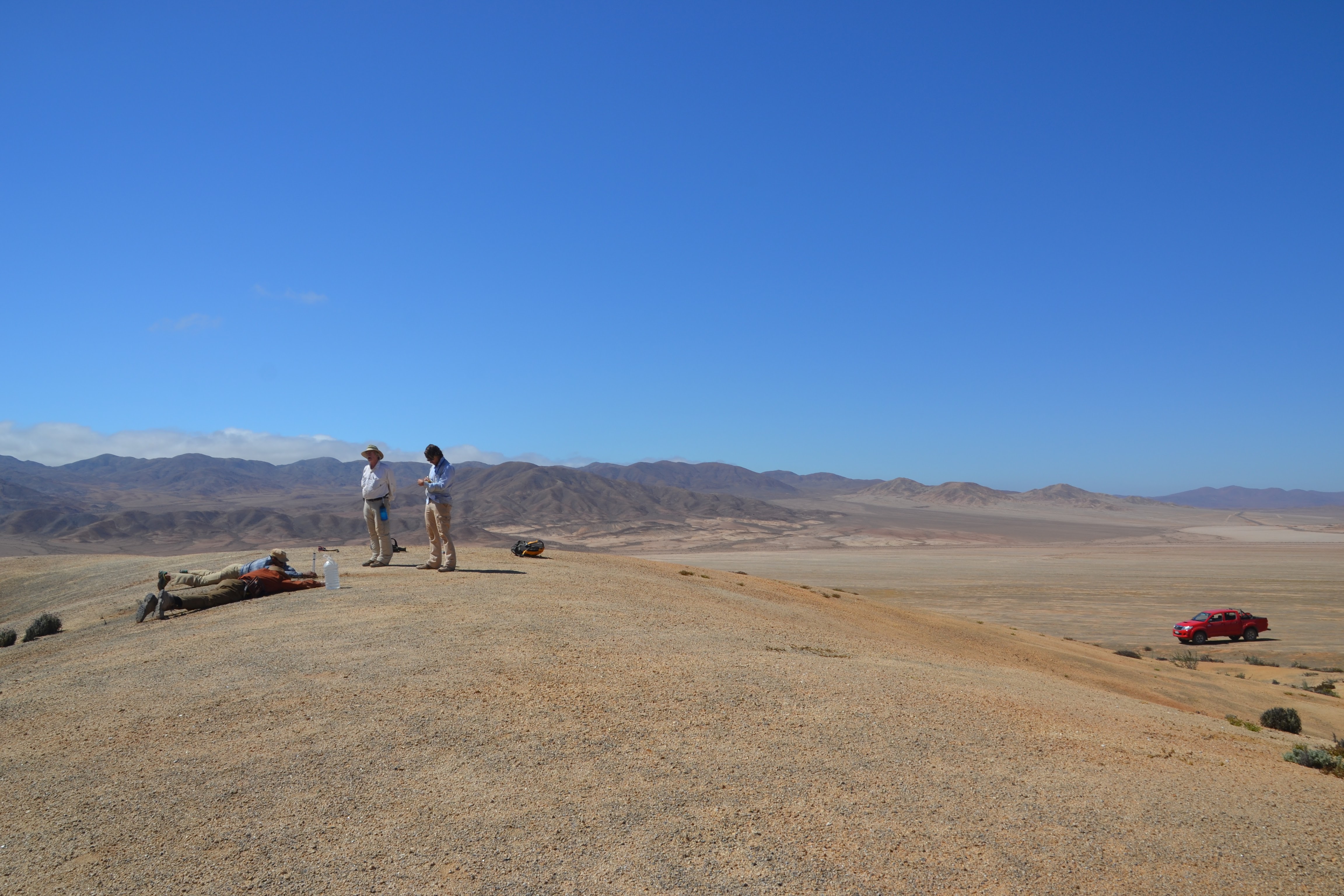Landscape response to a century scale rainfall in the absolute Atacama Desert
Role: Collaborator
Team: Marco Pfeiffer (Universidad de Chile), Arjun Heimsath (Arizona State University), Teresa Jordan (Cornell University), Alan Howard (University of Virginia), Ronald Amundson (UC Berkeley)
Funding: NSF EAGER
We examined the effects of rare rainfall events on the landscape in the hyperarid Atacama Desert, one of the driest places on Earth. We investigated how rainfall during a storm in March 2015 interacted with the unique soil properties of the region, including high infiltration rates and salt-rich soils, to assess how much of the landscape was affected.
The Atacama Desert rarely experiences rain, with some areas going decades without significant precipitation. When rain does fall, it has the potential to reshape parts of the landscape by causing runoff, erosion, and deposition. However, the results of this study show that the 2015 storm, while intense, only caused minor surface runoff and did not reactivate many of the desert’s fossilized features, such as gullies and channels. These features, formed during wetter periods in the Quaternary period, remained largely intact despite the rain. We also found that the high infiltration rates of the desert’s soils, up to 1000 mm/hour in some areas, prevented large-scale overland flow.
We used soil analyses, field observations, and measurements of water infiltration to better understand how past rainfall events might have shaped the landscape. We conclude that the Atacama’s soils are highly resilient to change due to their structure and high salt content. This gives the desert a natural resistance to erosion, even during rare, high-magnitude rain events.
We also explored the broader implications of climate change, predicting that future increases in rainfall may trigger more frequent and intense geomorphic processes in the region. However, because the desert is so dry and its soils so resistant, the threshold for significant landscape alteration remains high. The findings offer insight into how desert environments respond to rare rainfall events, both in the past and potentially in the future.

